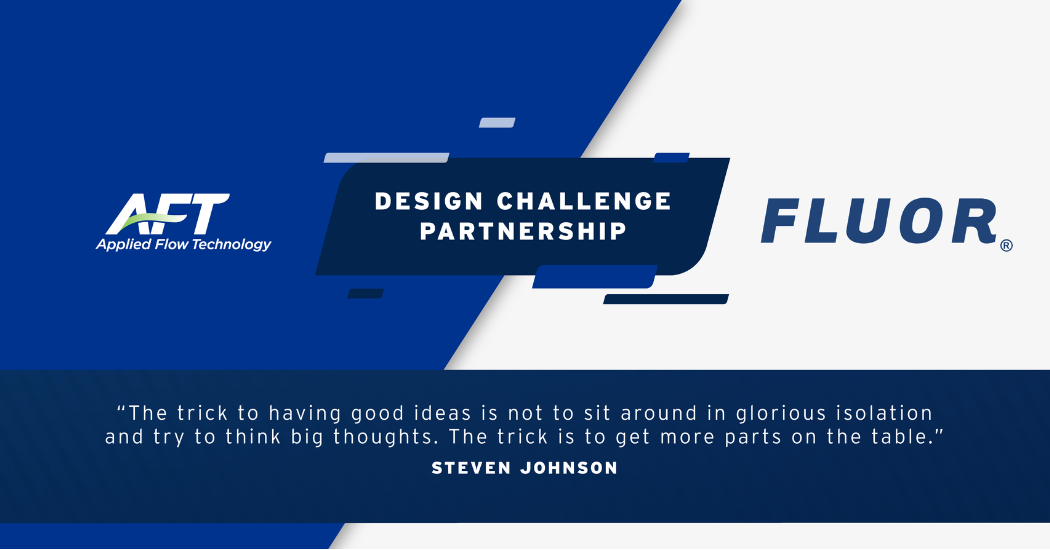Author Steven Johnson says, “The trick to having good ideas is not to sit around in glorious isolation and try to think big thoughts. The trick is to get more parts on the table.”
Fluor Construction, an international engineering, procurement, and construction, (EPC) firm, is doing just that by partnering again with Applied Flow Technology (AFT) with their design challenge contests among university engineering students in Texas. With each contest, students gain experience and exposure to real-world engineering tools and practices Fluor and other EPC firms leverage during the design process. More importantly, they hope to introduce the criticality of communication, teamwork, and considerations that are necessary for actual system construction.
This challenge has historically been held among engineering students at the University of Houston. Now in 2022, Fluor has expanded their contest to include students at Prairie View A&M University.
Fluor asked AFT to help with the hydraulic modeling portion, and AFT happily donated AFT Fathom (incompressible flow) and AFT Arrow (compressible flow) software licenses to help these students build their flow analysis skills.
With each challenge, mechanical engineering students take a project, typically about fluid transportation and processing, from initial design to final construction over a semester. They work through several stages of engineering, including pipeline routing, hydraulic analysis, and material logistics.
AFT software is used for the hydraulic analyses, helping students optimize pipe systems and pump/compressor stations. Modeling provides insight into how certain configurations, locations, and sizes affect the system flows, pressures, and energy consumption. One project included design of a water distribution pipeline. Students were to identify the ideal pump station location as part of the hydraulics study, ensuring appropriate delivery pressures and flows. However, the landscape presented natural limitations. The best “hydraulic” location to minimize energy use was not necessarily viable because of high construction costs. A balance between energy and capital costs was required.
The teams had a variety of approaches, many of which were feasible solutions. The students walked away having real experience with industry practices.
Another project focused on minimizing CO2 emissions for construction of pipelines to carry various power plant fuels: natural gas, hydrogen, and liquified anhydrous ammonia. The project was ultimately about generating specific amounts of electricity for neighboring areas while keeping the carbon footprint as low as possible. Again, the project encompassed everything from design to construction, but a critical piece was hydraulic modeling to optimize the pump/compressor locations and pipe sizes, where energy consumption and emissions from pipe construction were considered.
Computer modeling enabled the students to experiment and confirm any suggested configurations could deliver the appropriate fuel amounts. Students used both AFT Fathom (for the liquified ammonia) and Arrow (for the natural gas and hydrogen) to accomplish this. They found lower pressure systems would lead to lower CO2 outputs. This kind of design lead to more expensive systems and would not normally be chosen, so it was good experience for students to think creatively with a unique goal in mind. The project overseer at Fluor reported “[AFT software] was critical in completing the challenge, and the teams did a fantastic job in working their way through the challenge and applying the software.”
If you would like to partner with AFT on design challenges in your communities, contact info@aft.com.




